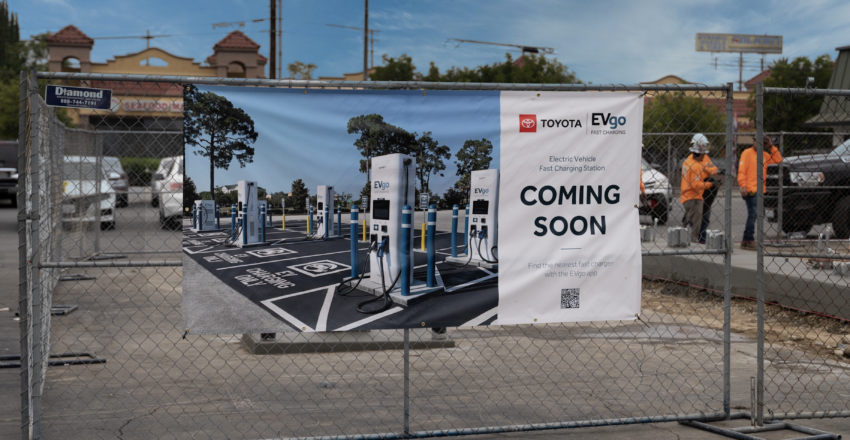- Toyota, EVgo Team on ‘Equitable’ EV Charging Project
- California’s Baldwin Hills, Sacramento first cities to receive high-power public charging stations.
EVs have typically cost a lot more than their conventional internal combustion counterparts and until now that’s kept them out of a lot of economically disadvantaged communities.
The rise in the past two years of a viable used EV market in states, like California, that have large EV population, has helped make them more affordable, but the lack of public charging infrastructure in and around some communities has been a stumbling block to widespread adoption of EVs, new or used.

Toyota, through its Empact Vision program, is working with EV charging station developer EVgo to help remedy the situation, in California at least, and has just announced the location of the first two 8-bay DC fast-charging stations to be built under the program.
Toyota and EVgo, with funding from a California low carbon fuels program, foot the bill for the charging stations, which EVgo will operate. Customers will pay the going rate for power when they use the EV fast-charge stations. The chargers are rated at 350 kWh to provide the fastest-possible charging sessions for all types of EVs.
The areas receiving the EV fast-charge stations were chosen “based on certain criteria such as resident income levels, demographics, air quality levels, and areas that have or are expected to have meaningful EV penetration,” according to Toyota.
The first project will locate one 8-stall DC fast-charge station in the central Sacramento area in Northern California and another in Baldwin Park, a city in Los Angeles County. Both areas are considered environmentally disadvantaged because of air pollution. Both also have high levels of rental housing, which typically isn’t amenable to home charging for EVs.
Toyota said the areas receiving the DC fast chargers were chosen “based on certain criteria such as resident income levels, demographics, air quality levels” as well as areas that have or are expected to have “meaningful” EV penetration.
“We want to help ensure these underserved communities are not overlooked in the EV transition, and providing support for these charging facilities helps provide access to those who may not have easy access to home or public charging options, ” said Christopher Yang, Business Development group vice president at Toyota Motor North America.
